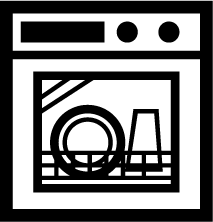Can you save your parched grass from a drought? In...
Read MoreWater Consumption Statistics
2023
Safe and easily accessible water is vital for the entire population, whether for drinking, domestic use, and agricultural production.
Even while public awareness of water usage has increased in recent years, much more can be done in this area. As the world’s population rises, so does the water demand, resulting in an unavoidable problem: water shortage. LawnStarter has compiled a list of informative statistics regarding water usage, fundamental causes, water pollution, and much more.
Key Takeaways
– Only 0.5% of the world’s fresh water is suitable for human use
– Globally, we use around 4 trillion m³ of fresh water each year
– 5 countries with the most water consumption are Canada, Armenia, New Zealand,
the United States, and Costa Rica
– American households use about 138 gallons of water per day
– Every eight seconds, a child dies from water-related diseases
– 2 million tons of sewage are released on the Earth’s waters every day
– 80% of all illnesses and deaths worldwide are caused by water-related diseases
– By 2050, water demand is expected to increase from 20% to 30%
Global Consumption Statistics
Water covers 71% of the Earth, so every year, the Earth’s water quantity remains constant. However, 97% of it is salty water in the oceans, leaving us only 3% of fresh water. Moving forward, 2.5% of that water is frozen, meaning that only 0.5% of fresh water is suitable for human consumption.
Worldwide, we use more than 4 trillion m³ of freshwater per year. From the beginning of 2022, we have consumed more than 2,002 trillion m³ of fresh water. Besides human consumption, 70% of freshwater withdrawals is used for agricultural purposes, 20% for industrial use, and the remaining 10% for domestic use.
Water usage differs from country to country and is influenced by many factors, such as population growth, industrial, and agricultural use. To figure out which countries use the most water, Finish teamed up with Dan Krause, a senior conservation biologist, and Dr. Ali Nazemi, an associate professor, to create the Finish Comparison Tool, which surveyed users about their water usage.

Top Five Countries With the Highest Water Consumption
United States
2842 m3 per capita
Canada
2333 m3 per capita
New Zealend
1589 m3 per capita
Costa Rica
1490 m3 per capita
Armenia
1439 m3 per capita
Water Consumption in Fashion Industry
The fashion industry is highly reliant on water for its survival. From the irrigation of cotton plantations at one end to washing clothing at the other, fashion is a thirsty business.
– The fashion industry uses enough water to end the thirst of 110 million people for an entire year.
– Scientists estimate that textiles produce 35% of the global ocean’s microplastic pollution, making textiles the largest known source of marine microplastic pollution.
– The fashion industry currently uses around 93 billion cubic meters of water per year (4% of all freshwater extraction globally)
– Cultivating just one kg of raw cotton takes 2,600 – 5,200 gallons of water.
– Processing a kg of fiber requires 26 to 40 gallons of water.

U.S Water Consumption Statistics
On an average scale, an American uses 101.5 gallons of water per day. According to the Environmental Protection Agency (EPA), in 2016, an average U.S. household used 300 gallons of water daily. However, by 2020, this number decreased. By surveying Americans on how much water they use daily, the Water Footprint Calculator reported that an average U.S. household uses 138 gallons of water per day. This translates to U.S households using 4,140 gallons of water per month.
Regarding age groups, U.S. children and adolescents drink 23 ounces of tap water per day, whereas adults drink almost twice as much (44 ounces).
According to the lay press, 75% of Americans are chronically dehydrated. While this is not supported by medical literature, dehydration is common in elderly patients. It has been reported to occur in 17% to 28% of older adults in the United States.
Water Consumption by Gender
In terms of gender, there’s a very slight difference when it comes to water consumption.
U.S. Water Consumption by Ethnicity
Ethnicity can be considered as another factor when it comes to water consumption. By examining water usage from different ethnicities, the Centers for Disease Control and Prevention found that white people consume water the most, with black people being in second place.

Black population28.5 ounces daily
Hispanic population33 ounces daily
Other ethnicities33.5 ounces daily
White population35 ounces daily
Asian population35.5 ounces daily
Humans consume water for different purposes, outside of their basic necessities. Let’s see how many gallons of water Americans use for their daily activities:

One flush of toilet
3 Gallons

Producing a roll of toilet paper
12-37 Gallons

Dishwasher
4-10 Gallons

Washing Machine
15 Gallons

10 minute shower
20 Gallons

Full tub
36 Gallons
Unfortunately, not all the available fresh water goes to proper use. According to the Washington State Department of Health, the average person wastes up to 30 gallons of water per day. So, it is this safe and accessible water we waste that people in Africa do not have access to, forcing them to rely on potentially hazardous drinking water sources.


Bottled Water Consumption
Worldwide, bottled water usage is increasing by 7%. Although it has its advantages, it also comes with several drawbacks, such as 14 million tons of plastic ending up in the ocean yearly. This means that every minute that goes by, a million plastic bottles are being purchased, and what may be a one-time use to society is a lifetime threat to the ocean.
The bottled water industry revenue is generated the most in the United States, reaching $86,40 billion in 2022.
Moreover, the U.S. bottled water market as of 2022 is $228,84 billion , and it is only expected to increase to $322,85 billion by 2028.
Regarding bottled water consumption per capita, Mexico, Italy, Thailand, and The U.S. lead the list.
Top Four Countries That Consume the Most Bottled Water per Capita
Mexico74.7 Gallons
Italy58.8 Gallons
Thailand57 Gallons
U.S45.2 Gallons
Top Bottled Water Brands in the U.S.

Nestle Pure Life
734 million

Dasani
950 million

Glaceau Smart Water
960 million

Aquafina
1 Billion

Private Labels
3.5 Billion
Water Pollution and Diseases
Water pollution has been a long-standing problem for humanity, with 2 million tons of sewage being released into the Earth’s waters every day. By considering the rate of climate change and population growth, more than 2 billion people live in water-stressed countries — a number that will only rise if we do nothing.
Globally, 2 billion people lack access to safe and accessible water. Out of them:
- – 1.2 billion people have access to an improved water source 30 minutes away from their location
- – 282 million people have limited access to an improved water source more than 30 minutes away from their location
- – 368 million people consume water from unsafe wells and springs
- – 122 million people collect water from unsafe sources such as lakes and rivers
More often than not, this leads to them being exposed to diseases such as diarrhea — which causes 485,000 deaths every year — cholera, typhoid, and polio. These water-related diseases account for 80% of all illnesses and deaths worldwide, which is unfortunate given that they are easily preventable. Another concerning fact is that every eight seconds, a child dies from water-related diseases, resulting in 10,800 deaths per day.
Through a 2021 survey, Gallup revealed that out of all the environmental issues we face, 56% of Americans are concerned about the pollution of drinking water, and 53% are concerned about the pollution of rivers, lakes, and reservoirs.
Water Pollution Remains Top Environmental Concern in U.S.
Through a 2021 survey, Gallup revealed that out of all the environmental issues we face:
Where is the Future Headed?
Global water demand is expected to increase over the next two decades in all three sectors: industry, domestic, and agriculture. Water demand for all uses will also increase by 20% to 30% by 2050.
While water demand is increasing, the supply is decreasing, in 2010, 1.9 billion people lived in severely water-scarce places, and this number is expected to increase to 3.2 billion by 2050.
The decrease in water supply will also impact fires around the U.S. Since the beginning of 2022, there have been 32 big fires that have burned over 1.6 million acres in five states. Due to high temperatures and dryness throughout the summer, critical fire weather conditions are expected in regions like Nevada, Utah, Alaska, and northwest Arizona.
The burden on the water system will also increase as, by 2050, the world’s population is expected to grow to between 9.4 billion and 10.2 billion. This population growth is predicted to accelerate in developing countries such as Africa and Asia, where water shortage is already a tremendous concern.
Luckily, there seems to light at the end of the tunnel. The State Water Project’s two largest reservoirs (Oroville and San Luis) have gained a combined 1.62 million acre-feet of water in storage – the highest in 6 years. This is roughly enough to provide water to 5.6 million households for a year
What Can You Do to Help?
Even if it seems that reducing your water usage would have a little global impact, it is the little things that make a difference. So, here are some steps you can take in order to help our ecosystem.

When washing your teeth, turn off the faucet
Save: 2 gallons of water per
minute

Avoid taking long
showers
Save: 2-11 gallons of water
per minute

Repair dripping
taps
Save: 4 gallons of water
per day

Run the dishwasher
only when it is full
Save: 1 gallon of water
per day

Acquire a water
meter
Keep track of how much
water is used

Invest in water-saving filters
Start from your own home
Sources:
Read more on how to avoid water waste
7 Grass Alternatives For A Low-Maintenance Lawn
Beautiful grass lawns have been the norm in American lawns...
Read More





